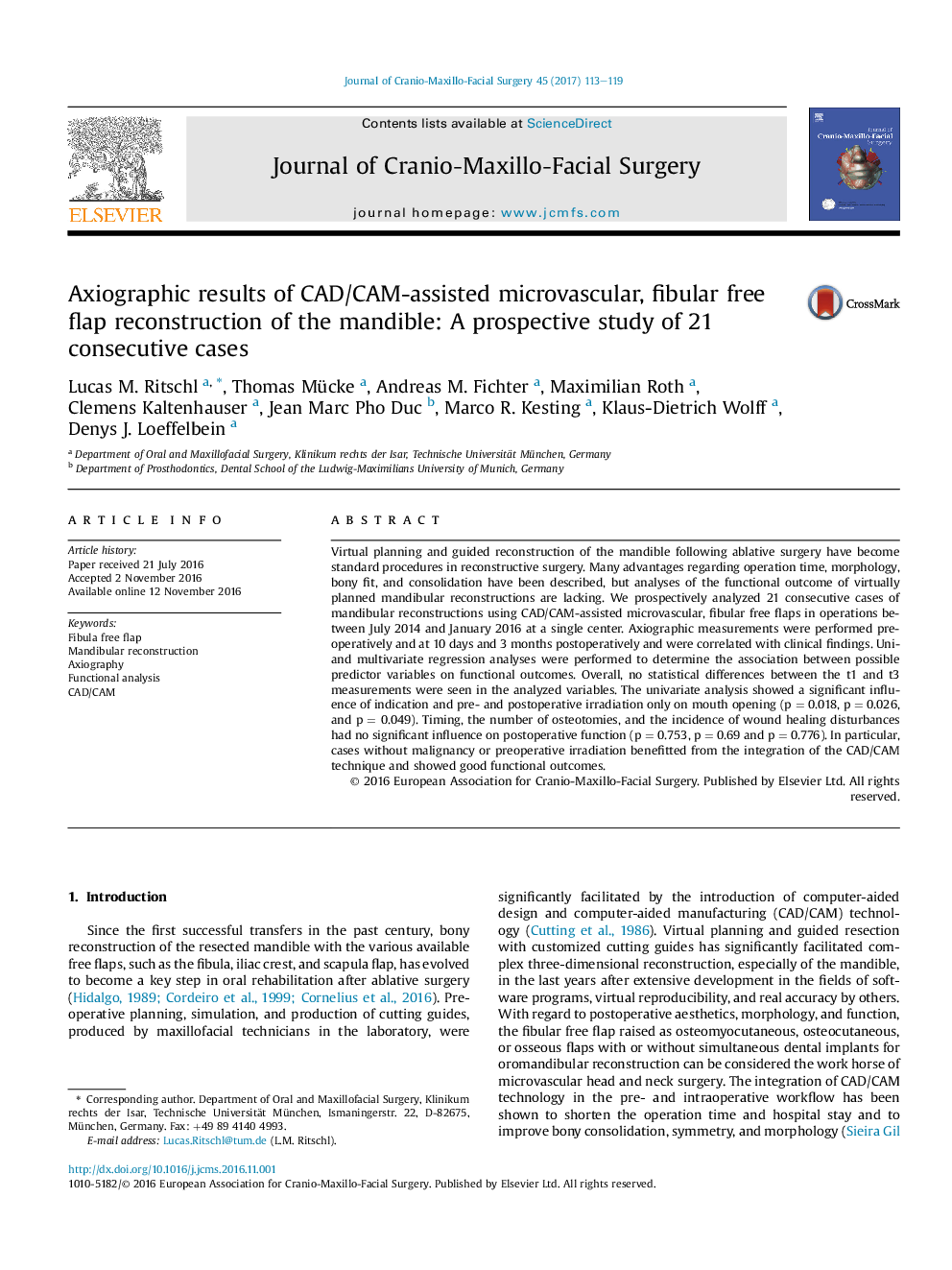| Article ID | Journal | Published Year | Pages | File Type |
|---|---|---|---|---|
| 5640323 | Journal of Cranio-Maxillofacial Surgery | 2017 | 7 Pages |
Virtual planning and guided reconstruction of the mandible following ablative surgery have become standard procedures in reconstructive surgery. Many advantages regarding operation time, morphology, bony fit, and consolidation have been described, but analyses of the functional outcome of virtually planned mandibular reconstructions are lacking. We prospectively analyzed 21 consecutive cases of mandibular reconstructions using CAD/CAM-assisted microvascular, fibular free flaps in operations between July 2014 and January 2016 at a single center. Axiographic measurements were performed preoperatively and at 10 days and 3 months postoperatively and were correlated with clinical findings. Uni- and multivariate regression analyses were performed to determine the association between possible predictor variables on functional outcomes. Overall, no statistical differences between the t1 and t3 measurements were seen in the analyzed variables. The univariate analysis showed a significant influence of indication and pre- and postoperative irradiation only on mouth opening (p = 0.018, p = 0.026, and p = 0.049). Timing, the number of osteotomies, and the incidence of wound healing disturbances had no significant influence on postoperative function (p = 0.753, p = 0.69 and p = 0.776). In particular, cases without malignancy or preoperative irradiation benefitted from the integration of the CAD/CAM technique and showed good functional outcomes.
